Thesis Chapters by Mennah Aly

Conception of the Doors of Heaven in Ancient Egyptian Religion
PhD Dissertation, 2022
The research is concerned with the study of the Conception of the Doors of Heaven in the ancient ... more The research is concerned with the study of the Conception of the Doors of Heaven in the ancient Egyptian religion starting from the predynastic era until the end of the Pharaonic rule. The term “Doors of Heaven”, the ancient Egyptian “aA wy pt”, was chosen to be the title of the dissertation being the most commonly used term by the ancient Egyptians to refer to the doors of the celestial sphere, whether the actual ones or their symbolic assimilations on earth. This is based on the fact that, the ancient Egyptians used the general word “pt” as the main epithet to designate the sky, while all the other terms were either referring to parts in the celestial vault that were later on applied to the heavenly vault as a whole or describing its nature as being starry “sHdw”, watery “qbHw” or of a metallic nature “biA”. In the research, the word “heaven” was applied to the term “pt” and all the other terms referring to the celestial sphere rather than “sky”. This is based on the fact that, the word “sky” designates the physical celestial vault, while the term “heaven” rather signifies the paradisiacal terrains which is located in this physical sky being the main aim of the deceased who crosses these doors and gateways to reach the celestial vault and unto the paradisiacal terrains. This idea is assured by the definition the word “heaven” in the language dictionaries being “the place believed to be the home of God where good people go when they die: the kingdom of heaven”.
The main aim of the research is to study the conception, iconography and religious purpose of the Doors of Heaven, not only the diurnal sky, but also the nocturnal one in which sun god travels during his night journey. Also, the research examines how the terminology that was used to refer to these gates affected both their conception, function as well as iconography. In addition, the research investigates the indirect depiction and mention of the Doors of Heaven in cases when they are not illustrated the form of actual portals. Through the studied evidences, the difference between the notion of the Doors of Heaven in both royal and non-royal religious spheres is also highlighted.

Embracing Through New Kingdom Royal Iconography
Ancient Egyptians represented themselves in several postures of affection in different aspects of... more Ancient Egyptians represented themselves in several postures of affection in different aspects of art throughout their ancient history. The significance of these intimate gestures has varied from being an indication of a familial kinship, a close relationship or a sacred union with divinities. The aforementioned postures include touching, holding hands, arms and shoulders, kissing, as well as embracing. They have existed in both royal and private art and among deities.
The thesis is discussing the embracing posture in royal iconography during the New Kingdom. It consists of two parts; documentation and analytic study.
The documentation is classified into four chapters; the first one is documenting the depiction of royal figures in embracing postures in statuary. It is divided into three sections; the first is illustrating the sculpture of rulers with deities. The first sector is classified into five main groups showing the sovereigns with members of the Theban triad, Heliopolitan Ennead and deities of the Memphite theology, in addition to the less common embodied deities and divinities whose identities are uncertain. Each group is subdivided according to the depiction of the royal figure in dyads, triads and statuary groups following a chronological order. The second part of the chapter is documenting the statues of rulers with family members in both double and group sculpture. Lastly, the third section is demonstrating statuary of royal figures with high officials.
The second chapter is classified into three sections. The first one traces the existence of the embracing gesture in sarcophagi lids. The second part documents the embracing gesture in reliefs including the stelae, paintings and talatat blocks which is classified internally into two sections. The first is demonstrating Akhenaten embraced by Aten while the second one is illustrating Nefertiti being embraced by Aten. The third part documents the artifacts incorporating embracing postures. This division includes examples of inlays, open works and pectorals.
As for the third chapter, it is documenting the embracing gesture in religious architecture, i.e. cult temples. The fourth chapter is demonstrating the embracing posture in the funerary architecture which is divided into two parts. The first one is documenting the embracing scenes in mortuary temples, while the second one is illustrating the embracing posture in tombs. The scenes of the tombs are categorized into two sections; the first is recording the embracing gestures inside the royal tombs while the second is concerned with the non-royal tombs. The aforementioned sector is divided into two divisions; the Theban and the Amarna tombs, which are subdivided into the northern and southern tombs. In each partition; there are two types of scenes, the first shows the royal figures in embracing gesture with Aten and the second one is embodying them in embracing postures with one another. It is noteworthy to mention that, in both chapters three and four, the temples and tombs are classified geographically from north to south.
The analytic study of the thesis studies the explanation and significance of the most well-known embracing postures. It is classified into two parts; the first one is the analysis which is discussing the significance of the illustrated embracing postures throughout the four chapters of the thesis. This section is divided into three sections according to the identity of those represented with the royal figures; since they are shown embraced by three parties: deities, family members and high officials. The second part of the analytical study is the conclusion which comprises all the facts that have been discussed in the analysis.
There are two appendixes that will be added in the end of the thesis. Appendix I will group all the documents throughout the research according to their significance and the parties embracing the royal figures. Moreover, Appendix II will give examples to show the different embracing postures that were documented in the four chapters.
Papers by Mennah Aly
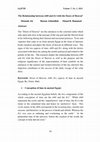
International Academic Journal Faculty of Tourism and Hotel Management
The "Doors of Heaven" are the entrances to the celestial realm which only open and close at the p... more The "Doors of Heaven" are the entrances to the celestial realm which only open and close at the passage of the sun god and the blessed dead in his following during their diurnal and nocturnal journeys. Texts and vignettes that came to us from ancient Egypt in the form of funerary books mention and depict the doors of heaven in different ways. The signs of the two aspects of time, nHH and D.t, along with the deities associated with them are among the motifs portrayed and related to the portals of the sky. The research studies the relationship between nHH and D.t with the Doors of Heaven as well as the purpose and the religious significance of the representation of their symbols on the entrances to the eastern and western horizons of the sky and how this depiction contributes to the success of the daily voyage of the solar deity.
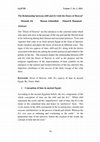
International Journal of the Faculty of Tourism and Hotel Management, 2021
The "Doors of Heaven" are the entrances to the celestial realm which only open and close at the p... more The "Doors of Heaven" are the entrances to the celestial realm which only open and close at the passage of the sun god and the blessed dead in his following during their diurnal and nocturnal journeys. Texts and vignettes that came to us from ancient Egypt in the form of funerary books mention and depict the doors of heaven in different ways. The signs of the two aspects of time, nHH and D.t, along with the deities associated with them are among the motifs portrayed and related to the portals of the sky. The research studies the relationship between nHH and D.t with the Doors of Heaven as well as the purpose and the religious significance of the representation of their symbols on the entrances to the eastern and western horizons of the sky and how this depiction contributes to the success of the daily voyage of the solar deity.

The Sycamore Tree as the Door of Heaven: Testimony from Book of the Dead
According to the ancient Egyptian religious conceptions, the heavenly realms and the netherworld ... more According to the ancient Egyptian religious conceptions, the heavenly realms and the netherworld were separated by doors that were generally known as the Doors of Heaven. The main function of these gates was to protect the celestial dominion from the enemies of the sun god who threaten the world’s order so that they only open for his admission and the deceased in his following during their diurnal and nocturnal journeys. As witnessed in the ancient Egyptian Book of the Dead, the Doors of Heaven were shown in diverse iconographies so that they are not just represented as regular doors. Thus; there are numerous elements that played the role of the portal of the sky, and among these elements is the sycamore tree. These vignettes which show the sycamore tree as an indication to the Door of Heaven were not only incorporated in the Book of the Dead papyri, but also on the so-called funerary papyri and sarcophagi. The research sheds light on the role of the sycamore tree as the Door of Heaven through studying the vignettes of the Book of the Dead to identify how sycamore contributed to the success of the solar journey that led to the rebirth and rejuvenation of the sun god and the deceased.

The Relationship between nHH and D.t with the Doors of Heaven
International Academic Journal Faculty of Tourism and Hotel Management, 2022
The “Doors of Heaven” are the entrances to the celestial realm which only open and close at the p... more The “Doors of Heaven” are the entrances to the celestial realm which only open and close at the passage of the sun god and the blessed dead in his following during their diurnal and nocturnal journeys. Texts and vignettes that arrived to us from ancient Egypt in the form of funerary books mention and depict the doors of heaven in multiple ways. The signs of the two aspects of time, nHH and D.t, along with the deities associated with them are among the motifs portrayed and related to the portals of the sky. The research studies the relationship between nHH and D.t with the Doors of Heaven as well as the purpose and the religious significance of the representation of their symbols on the entrances to the eastern and western horizons and how this depiction contributes to the success of the daily voyage of the solar deity.
Journal of Association of Arab Universities for Tourism and Hospitality, 2017
Shu whom is given the title "son of Re" is the unification between the two divinities Onnuris and... more Shu whom is given the title "son of Re" is the unification between the two divinities Onnuris and Shu. This association is made due to the roles played by both deities in bringing the revengeful eye of Re personified in goddesses Tefnut and Mekhit; since later on Tefnut became the counterpart of Shu and Mekhit became the consort of Onnuris. The name of the deity in ancient Egyptian is Anhur which means "He who leads back the distant one" which corresponds to his own role in the aforementioned legend, G.
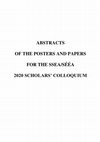
The Late Bronze Age (c.1550-1200 BCE) ushered in an era of 'internationalism' in the ancient worl... more The Late Bronze Age (c.1550-1200 BCE) ushered in an era of 'internationalism' in the ancient world as various polities between the Mediterranean basin and the Middle East interacted with one another through trade, political diplomacy, and warfare. It is during this period that Near Eastern scholars note and focus on the dissemination of Egyptian culture in the Levant due to various art forms emulating Egyptian iconography-a novelty and thus becoming a marker for internationalism. However, few realize that Egyptian iconography was present in the Levant since the Middle Bronze Age (c.2100-1550 BCE), and that its iconographic influences even impacted societies beyond the Zagros Mountains-lasting well into the time of the Achaemenid Empire before the spread of Hellenism by Alexander the Great. It was during the Middle Bronze Age that art became a vehicle with which Egyptian iconography (in particular royal and divine symbols) was spread and adapted by other cultures, most of the time used to express their own beliefs rather than simple emulation. However, there was a clear understanding of the Egyptian symbols and beliefs being acculturated as it was ever-present in foreign art, regardless of foreign entanglement. I will put forth four case studies in chronological order in which Egyptian iconography is best exemplified in Near and Middle Eastern art: Syro-Palestinian glyptics of the Middle Bronze Age, the Late Bronze Age Ras Shamra palace (Ugarit), the Neo-Assyrian ivories, and Achaemenid palatial art. These case studies will demonstrate that royal and divine iconography from Egypt was imported and acculturated by many ancient societies to express local royal and divine ideologies, demonstrating the irrefutable impact and influence Egyptian culture had on the ancient world for over 1000 years. 'Serifs' in painted hieroglyphs? Observations from the tomb of Inherkhâouy (TT 359) at Deir el-Medina (a bilingual poster) Elizabeth A. Bettles, Visiting Research Fellow at the NINO, Universiteit Leiden Some cursive hieroglyphs painted in the 25 th Dynasty tomb of Karakhamun (TT 223) at Thebes display 'slight projections' at the end of straight, sometime curved, lines which have been termed 'serifs'.* Characteristic of certain font-families in modern-day typography, serifs are usually considered as originating in ancient Greek and Roman monumental inscriptions where their function is viewed as decorative, offering a finishing flourish to a letter; and a mason's final chiselling procedure to neaten and strengthen the end-point of a carved line. But can the term 'serif' be correctly applied to the 'slight projections' attested in painted hieroglyphs? Painted hieroglyphs (Fischer's Type 2) in the 20 th Dynasty tomb of Inherkhâouy (TT 359) at Deir el-Medina exhibit similar 'slight projections'. Close-up examination reveals these marks are separatelymade, tiny brush-strokes, often scarcely visible and partly obscured by later strokes. Their function as being decorative is difficult to acknowledge; nor do they denote an actual component of the image represented. Notably they are brush-strokes applied at the beginning of a sign's formation, at the start-point of a straight line or curve, and sometimes at their terminus. Such marks appear to delimit the length of lines and the spatial extent of a hieroglyph. One proposes therefore that 'demarcation marks' might be a more fitting term than 'serifs' for these strokes. At least two scribe/painters (sS-qd.w) painted the hieroglyphic texts in TT 359, both employing 'demarcation marks'. Potentially, they acquired this practice together whilst learning to write, presumably under the tuition of their Hry sS-qd father. When hieroglyphs in this tomb were painted on stone and then carved, indications of these tiny strokes were omitted by the mason's chisel, indicating these marks were purely a painterly practice.
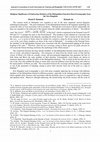
Journal of Association of Arab Universities for Tourism and Hospitality, 2014
The connection between the king and the members of the Heliopolitan Ennead assures that he plays ... more The connection between the king and the members of the Heliopolitan Ennead assures that he plays a role of cosmic and political importance. The emergence of Atum from the chaotic water of Nun and the victory of Horus over Seth are actually cosmic and governmental happenings that guarantee the heir of both Atum and Horus the same qualities of their position. Consequently, royal figures are shown in numerous depictions with the divinities of the Heliopolitan theology. This is based on the fact that art was one of the ways that enabled the kings to insure their royal descendancy from the first king who ruled as the representative of Horus on earth. The association between the sovereign and the deities was regarded as one of the guarantors of kingship, aiming to prove their ancestry from one of the gods as a sign of kingship.
New Kingdom royal iconography is rich with many examples depicting the sovereign with the members of the Heliopolitan Ennead in different postures, especially in the intimate gesture of embracing which signifies their closeness and association with the divinities since it is regarded as a sign of intimacy and spiritual union. Moreover, through embracing, the eternal being, the divine essence and the scent of life residing in the gods are all transformed to the king which raises him to the divine rank. This article explains the religious significance achieved through embracing the royal figures to the members of the Heliopolitan Ennead.
Talks by Mennah Aly
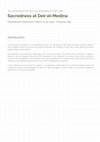
The village of Deir el-Medina is one of the ancient Egyptian settlements from which a rich corpus... more The village of Deir el-Medina is one of the ancient Egyptian settlements from which a rich corpus of religious material is retrieved to indicate the position and role of religion in a community, apart from the official state religion. The inhabitants of the village had strong personal relationships with their deities, believed them to be benevolent, generous as well as responsive to prayers and petitions. Nevertheless, there are cases where the villagers had attributed a state of misery they ended up with to gods, which was a punitive response to sins they had committed.
Through analysing examples of religious and everyday texts from Deir el-Medina, the research examines the villagers’ perception about the punitive aspect of their divinities. From sociological and psychological perspectives, the paper investigates how divine punishment would define the villagers’ code of ethics, afterlife conceptions as well as the way they had viewed their own selves.
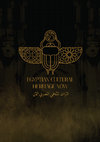
The Egyptian Cultural Heritage Now, 2023
As a country famous for its long history, Egypt is well-known for its rich and diverse cultural h... more As a country famous for its long history, Egypt is well-known for its rich and diverse cultural heritage, which is not only attested in the form of tangible sites, monuments and artefacts displayed in numerous museums, but also in the form of the intangible vivid oral traditions, festive celebrations, social customs as well as traditional arts and crafts. The importance of this intangible cultural heritage is that it represents the preserved identity of the Egyptian civilization and its traditions, -passed on from one generation to the next. Unfortunately, Egyptian intangible cultural heritage is endangered due to broad cultural globalization, and demographic and/or economic issues leading to weakened practices by local communities. Due to their role in preserving, interpreting, and promoting the natural and cultural heritage of humanity, and as knowledge-sharing institutions that operate for the benefit of communities, the regional museums in Egypt could in fact play an active role in the preservation of Egyptian intangible cultural heritage and its sustainable dissemination to future generations.
This paper highlights the role of regional museums in the preservation of Egypt’s cultural identity through communication of its rich and diverse cultural heritage to the local communities. It also sheds light on these institutions’ role in bridging the gap between intangible cultural heritage, exemplified in traditional practices, arts and crafts, and the museums’ physical collections. As the sustainable preservation of intangible cultural heritage depends mainly on the practicing communities, this
research sheds light on the idea of involving the rural communities in museum activities and public events. Furthermore, the paper discusses the participation of the private sector and stakeholders in supporting the role of the local museums in the rural communities’ development and in the preservation of Egypt’s tangible and intangible cultural heritage.
ملامح الديانة المصرية القديمة - Introduction to Ancient Egyptian Religion

Graduate Annual Research Discussions on Egypt and Nubia GARDEN VII, 2020
According to the ancient Egyptian religious beliefs, the two realms of heaven and hereafter are s... more According to the ancient Egyptian religious beliefs, the two realms of heaven and hereafter are separated by doors. The doors of the celestial sphere are under the command of Nut who assists the deceased to enter her field, while gates of the netherworld are under the supervision of Geb which are protected by gatekeepers who give admission only to those who know their names and the name of the gate itself. The doors of the sky, that are generally referred to with the term
“aA.wy pt”, act as the protector of heaven being the celestial domain of the deities, provide entrance to the sun god together with the blessed dead and also guard the sky from the enemies threatening the world’s order.
The aim of the research is to study the religious purpose and the iconography of the doors that give access to the celestial dominion, as well as their conception and development in the ancient Egyptian religion from the early dynastic era until the end of the Pharaonic period, while comparing between the conception of the doors of heaven in both royal and non royal religious contexts. As for the doors of the netherworld “dwAt”, they will be studied from the perspective that whether they should be understood with the same notion of those of heaven being also an entrance to the sky.
The talk and presentation given is part of PhD Thesis with the same title in the Graduate Annual Research Discussion on Egypt and Nubia VII in the German Archaeological Institute in Cairo, organized by the German Archaeological Institute in Cairo, Netherlands-Flemish Institute in Cairo, The American University in Cairo and Cairo University.
Conference Presentations by Mennah Aly
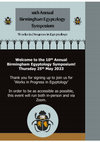
“The eastern door of heaven is open to you. Nut has embraced you. She whose hair is long, and whose breasts hang down”: The Embracing Arms and the Heaven’s Doors , 2023
In the ancient Egyptian religious texts since the Old Kingdom, the sun god and the deceased are m... more In the ancient Egyptian religious texts since the Old Kingdom, the sun god and the deceased are mentioned to have been embraced by mother goddesses to guarantee their rebirth after death. This idea appears in the concluding tableaux of the New Kingdom Netherworld Books which portray the solar deity elevated from the netherworld into the morning sky by pair of arms, while in tomb scenes and on the Third Intermediate Period funerary papyri and coffins, the sun disk is shown embraced by two pair of arms at its rising and setting. Despite of being attributed to deities like Nut, Shu, Nun and Tatenen; in most of the attestations, the identity of the owner of the embracing arms is kept anonymous. In fact, the depiction of the arms embracing the solar deity are associated with his Perpetuum Mobile across the eastern and the western horizons of the sky, and thus also related to his passage through the Doors of Heaven that gives access to these two horizons. Given to their protective role and secretive nature, the Doors of Heaven were almost concealed rather than appearing as mere portals, while their existence was denoted to in various themes, among which is the embracing arms.
The research shows how the embracing arms are not only associated with the opening of the Doors of Heaven, but also substitute them in their role of separating between the different realms of the universe. Furthermore, the paper investigates the identity of the owners of these embracing arms, either deities or gatekeepers, and how through embracing the solar deity, they evoke the primeval moment of creation that entails his emergence from the Unified Darkness; a course repeated with every solar rising.
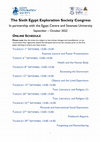
‘The Souls and Shadows Receive Him. The Firmament approaches the Netherworld’: Sunshades, Feathers, and the Doors of Heaven, 2022
In the Book of Caverns concluding tableau in the Merenptah template, the birth of the sun god ann... more In the Book of Caverns concluding tableau in the Merenptah template, the birth of the sun god announcing the opening of Heaven's Doors happens between two rows of sunshades ‘šwt’ and ‘bꜣ’ birds.
The relationship between sunshades and bꜣ birds with the sky gates is known from other funerary attestations, and further assured by the appearance of the solar deity and the dead as bꜣ and šwt at sunrise.
This research aims to understand the religious significance of bꜣ and šwt at the opening of Heaven's Doors, and how divinities associated with them play an important role in the continuous rebirth of the sun. The paper examines how royal smiting scenes incorporating identical motifs, connect the king with sunrise. This study aims to discuss the origin and wider implication of sunshades/feather fans in these attestations, connecting them symbolically and etymologically beyond these contexts to nature and the social-political sphere.
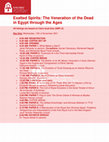
Exalted Spirits: The Veneration of the Dead in Egypt through the Ages., 2021
In the stela of Padisobek J.E. 44065, famously known as the stela of a Childless Man, the owner n... more In the stela of Padisobek J.E. 44065, famously known as the stela of a Childless Man, the owner narrates his misery of not having an heir who would make him a glorified spirit “sAx” at the Portal of the Horizon “sbxt Axt”. Whereas the notion of becoming an Ax is currently widely believed to have been a result of a series of rituals enacted in the favor of the deceased mainly by his descendants, these rites, as mentioned on the stela of Padisobek, seem to be associated with the doors of the heavenly realm. Based on the ancient Egyptian religious texts, the main purpose of the portals of the celestial sphere was to separate between heaven and the netherworld and only give access to the sun god and the blessed dead in his following. As evidenced by the funerary texts, ancestor cult rituals performed for the deceased so as to attain their Ax status are associated with their entrance into the gates of the celestial domain.
Using testimony from the funerary texts, and in light of the stela of Padisobek, the research aims to understand the relationship between the sAxw rites performed in favor of the deceased and the doors of the celestial sphere; and whether these gates of the heavenly realm through which the venerated dead who attained their Ax status pass could be equated with other equivalent portals on earth. While those who had an heir had their own Ax status confirmed, the case of the childlessness of Padisobek will also be given special attention.
The Relationship between nHH and Dt with the Doors of Heaven
Drafts by Mennah Aly
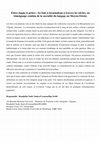
Les bols à incantations sont un des objets les plus typiques des collections consacrées à la Méso... more Les bols à incantations sont un des objets les plus typiques des collections consacrées à la Mésopotamie ou à l’Égypte Ancienne. Les invocations inscrites circulairement tout le long de leur surface visaient à protéger certains lieux, à guérir certains maux ou pouvaient aussi être utilisés au cours de rites religieux. Ces bols se retrouvent également dans les cultures juive, syriaco-chrétienne ainsi que dans le monde arabo-islamique. La notion de langue sacrée y prend toute son importance et les lettres apparaissent comme l’intermédiaire entre le monde des hommes et le monde invisible. Cette gnose des lettres est bien connue en islam, particulièrement dans le sufisme ou le chiisme, ainsi que dans le christianisme d’expression syriaque ou dans le judaïsme kabbalistique et il existe entre tous ces courants ésotériques de nets parallèles sur cette question. Mais ces conceptions pourraient en fait être la continuité de traditions plus anciennes encore dont les bols à incantations ainsi que d’autres objets jouant le même rôle seraient les témoins privilégiés. On pensera notamment à la Mésopotamie : les sites de Syrie et d’Irak ont livré des tablettes cunéiformes portant des textes prescriptifs rituels. Parmi ceux-ci, on notera la présence d’incantations où le signe cunéiforme inscrit est alors vidé de son contenu sémantique, créant l’illusion d’une nouvelle langue. La prononciation de ces signes contient une efficacité nouvelle qui va parachever l’ensemble de la procédure.
L’objet de cette recherche est d’étudier le phénomène transculturel et transreligieux des bols à incantations ainsi que d’autres objets similaires durant l’antiquité au Proche-Orient et de questionner la continuité de leurs utilisations au cours de rites religieux jusqu’à nos jours. Une analyse diachronique permettra d’esquisser, à travers son histoire socioculturelle, les origines et les évolutions de ces objets témoins de l’occultisme plurimillénaire de cette région, et d’éclaircir l’usage qui en est fait dans les pratiques contemporaines populaires.
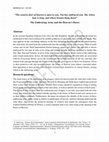
In the ancient Egyptian religious texts since the Old Kingdom, the sun god and the deceased are m... more In the ancient Egyptian religious texts since the Old Kingdom, the sun god and the deceased are mentioned to have been embraced by several deities to guarantee their rebirth after death. This idea appears in the concluding tableaux of the New Kingdom Netherworld Books which portray the solar deity elevated from the netherworld into the morning sky by pair of arms, while in tomb scenes and on the Third Intermediate Period funerary papyri and coffins, the sun disk is shown embraced by two pair of arms at its rising and setting. Despite of being attributed to deities like Nut, Shu, Nun and Tatenen; in most of the attestations, the identity of the owner of the embracing arms is kept anonymous. In fact, the depiction of the arms embracing the solar deity are associated with his Perpetuum Mobile across the eastern and the western horizons of the sky, and thus also related to his passage through the Doors of Heaven that gives access to these two horizons. Given to their protective role and secretive nature, the Doors of Heaven were almost concealed rather than appearing as mere portals, whereas their existence was denoted to in various themes, among which is the embracing arms.









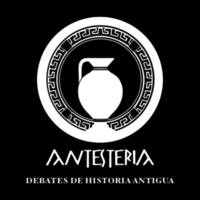

Uploads
Thesis Chapters by Mennah Aly
The main aim of the research is to study the conception, iconography and religious purpose of the Doors of Heaven, not only the diurnal sky, but also the nocturnal one in which sun god travels during his night journey. Also, the research examines how the terminology that was used to refer to these gates affected both their conception, function as well as iconography. In addition, the research investigates the indirect depiction and mention of the Doors of Heaven in cases when they are not illustrated the form of actual portals. Through the studied evidences, the difference between the notion of the Doors of Heaven in both royal and non-royal religious spheres is also highlighted.
The thesis is discussing the embracing posture in royal iconography during the New Kingdom. It consists of two parts; documentation and analytic study.
The documentation is classified into four chapters; the first one is documenting the depiction of royal figures in embracing postures in statuary. It is divided into three sections; the first is illustrating the sculpture of rulers with deities. The first sector is classified into five main groups showing the sovereigns with members of the Theban triad, Heliopolitan Ennead and deities of the Memphite theology, in addition to the less common embodied deities and divinities whose identities are uncertain. Each group is subdivided according to the depiction of the royal figure in dyads, triads and statuary groups following a chronological order. The second part of the chapter is documenting the statues of rulers with family members in both double and group sculpture. Lastly, the third section is demonstrating statuary of royal figures with high officials.
The second chapter is classified into three sections. The first one traces the existence of the embracing gesture in sarcophagi lids. The second part documents the embracing gesture in reliefs including the stelae, paintings and talatat blocks which is classified internally into two sections. The first is demonstrating Akhenaten embraced by Aten while the second one is illustrating Nefertiti being embraced by Aten. The third part documents the artifacts incorporating embracing postures. This division includes examples of inlays, open works and pectorals.
As for the third chapter, it is documenting the embracing gesture in religious architecture, i.e. cult temples. The fourth chapter is demonstrating the embracing posture in the funerary architecture which is divided into two parts. The first one is documenting the embracing scenes in mortuary temples, while the second one is illustrating the embracing posture in tombs. The scenes of the tombs are categorized into two sections; the first is recording the embracing gestures inside the royal tombs while the second is concerned with the non-royal tombs. The aforementioned sector is divided into two divisions; the Theban and the Amarna tombs, which are subdivided into the northern and southern tombs. In each partition; there are two types of scenes, the first shows the royal figures in embracing gesture with Aten and the second one is embodying them in embracing postures with one another. It is noteworthy to mention that, in both chapters three and four, the temples and tombs are classified geographically from north to south.
The analytic study of the thesis studies the explanation and significance of the most well-known embracing postures. It is classified into two parts; the first one is the analysis which is discussing the significance of the illustrated embracing postures throughout the four chapters of the thesis. This section is divided into three sections according to the identity of those represented with the royal figures; since they are shown embraced by three parties: deities, family members and high officials. The second part of the analytical study is the conclusion which comprises all the facts that have been discussed in the analysis.
There are two appendixes that will be added in the end of the thesis. Appendix I will group all the documents throughout the research according to their significance and the parties embracing the royal figures. Moreover, Appendix II will give examples to show the different embracing postures that were documented in the four chapters.
Papers by Mennah Aly
New Kingdom royal iconography is rich with many examples depicting the sovereign with the members of the Heliopolitan Ennead in different postures, especially in the intimate gesture of embracing which signifies their closeness and association with the divinities since it is regarded as a sign of intimacy and spiritual union. Moreover, through embracing, the eternal being, the divine essence and the scent of life residing in the gods are all transformed to the king which raises him to the divine rank. This article explains the religious significance achieved through embracing the royal figures to the members of the Heliopolitan Ennead.
Talks by Mennah Aly
Through analysing examples of religious and everyday texts from Deir el-Medina, the research examines the villagers’ perception about the punitive aspect of their divinities. From sociological and psychological perspectives, the paper investigates how divine punishment would define the villagers’ code of ethics, afterlife conceptions as well as the way they had viewed their own selves.
This paper highlights the role of regional museums in the preservation of Egypt’s cultural identity through communication of its rich and diverse cultural heritage to the local communities. It also sheds light on these institutions’ role in bridging the gap between intangible cultural heritage, exemplified in traditional practices, arts and crafts, and the museums’ physical collections. As the sustainable preservation of intangible cultural heritage depends mainly on the practicing communities, this
research sheds light on the idea of involving the rural communities in museum activities and public events. Furthermore, the paper discusses the participation of the private sector and stakeholders in supporting the role of the local museums in the rural communities’ development and in the preservation of Egypt’s tangible and intangible cultural heritage.
“aA.wy pt”, act as the protector of heaven being the celestial domain of the deities, provide entrance to the sun god together with the blessed dead and also guard the sky from the enemies threatening the world’s order.
The aim of the research is to study the religious purpose and the iconography of the doors that give access to the celestial dominion, as well as their conception and development in the ancient Egyptian religion from the early dynastic era until the end of the Pharaonic period, while comparing between the conception of the doors of heaven in both royal and non royal religious contexts. As for the doors of the netherworld “dwAt”, they will be studied from the perspective that whether they should be understood with the same notion of those of heaven being also an entrance to the sky.
The talk and presentation given is part of PhD Thesis with the same title in the Graduate Annual Research Discussion on Egypt and Nubia VII in the German Archaeological Institute in Cairo, organized by the German Archaeological Institute in Cairo, Netherlands-Flemish Institute in Cairo, The American University in Cairo and Cairo University.
Conference Presentations by Mennah Aly
The research shows how the embracing arms are not only associated with the opening of the Doors of Heaven, but also substitute them in their role of separating between the different realms of the universe. Furthermore, the paper investigates the identity of the owners of these embracing arms, either deities or gatekeepers, and how through embracing the solar deity, they evoke the primeval moment of creation that entails his emergence from the Unified Darkness; a course repeated with every solar rising.
The relationship between sunshades and bꜣ birds with the sky gates is known from other funerary attestations, and further assured by the appearance of the solar deity and the dead as bꜣ and šwt at sunrise.
This research aims to understand the religious significance of bꜣ and šwt at the opening of Heaven's Doors, and how divinities associated with them play an important role in the continuous rebirth of the sun. The paper examines how royal smiting scenes incorporating identical motifs, connect the king with sunrise. This study aims to discuss the origin and wider implication of sunshades/feather fans in these attestations, connecting them symbolically and etymologically beyond these contexts to nature and the social-political sphere.
Using testimony from the funerary texts, and in light of the stela of Padisobek, the research aims to understand the relationship between the sAxw rites performed in favor of the deceased and the doors of the celestial sphere; and whether these gates of the heavenly realm through which the venerated dead who attained their Ax status pass could be equated with other equivalent portals on earth. While those who had an heir had their own Ax status confirmed, the case of the childlessness of Padisobek will also be given special attention.
Drafts by Mennah Aly
L’objet de cette recherche est d’étudier le phénomène transculturel et transreligieux des bols à incantations ainsi que d’autres objets similaires durant l’antiquité au Proche-Orient et de questionner la continuité de leurs utilisations au cours de rites religieux jusqu’à nos jours. Une analyse diachronique permettra d’esquisser, à travers son histoire socioculturelle, les origines et les évolutions de ces objets témoins de l’occultisme plurimillénaire de cette région, et d’éclaircir l’usage qui en est fait dans les pratiques contemporaines populaires.
The main aim of the research is to study the conception, iconography and religious purpose of the Doors of Heaven, not only the diurnal sky, but also the nocturnal one in which sun god travels during his night journey. Also, the research examines how the terminology that was used to refer to these gates affected both their conception, function as well as iconography. In addition, the research investigates the indirect depiction and mention of the Doors of Heaven in cases when they are not illustrated the form of actual portals. Through the studied evidences, the difference between the notion of the Doors of Heaven in both royal and non-royal religious spheres is also highlighted.
The thesis is discussing the embracing posture in royal iconography during the New Kingdom. It consists of two parts; documentation and analytic study.
The documentation is classified into four chapters; the first one is documenting the depiction of royal figures in embracing postures in statuary. It is divided into three sections; the first is illustrating the sculpture of rulers with deities. The first sector is classified into five main groups showing the sovereigns with members of the Theban triad, Heliopolitan Ennead and deities of the Memphite theology, in addition to the less common embodied deities and divinities whose identities are uncertain. Each group is subdivided according to the depiction of the royal figure in dyads, triads and statuary groups following a chronological order. The second part of the chapter is documenting the statues of rulers with family members in both double and group sculpture. Lastly, the third section is demonstrating statuary of royal figures with high officials.
The second chapter is classified into three sections. The first one traces the existence of the embracing gesture in sarcophagi lids. The second part documents the embracing gesture in reliefs including the stelae, paintings and talatat blocks which is classified internally into two sections. The first is demonstrating Akhenaten embraced by Aten while the second one is illustrating Nefertiti being embraced by Aten. The third part documents the artifacts incorporating embracing postures. This division includes examples of inlays, open works and pectorals.
As for the third chapter, it is documenting the embracing gesture in religious architecture, i.e. cult temples. The fourth chapter is demonstrating the embracing posture in the funerary architecture which is divided into two parts. The first one is documenting the embracing scenes in mortuary temples, while the second one is illustrating the embracing posture in tombs. The scenes of the tombs are categorized into two sections; the first is recording the embracing gestures inside the royal tombs while the second is concerned with the non-royal tombs. The aforementioned sector is divided into two divisions; the Theban and the Amarna tombs, which are subdivided into the northern and southern tombs. In each partition; there are two types of scenes, the first shows the royal figures in embracing gesture with Aten and the second one is embodying them in embracing postures with one another. It is noteworthy to mention that, in both chapters three and four, the temples and tombs are classified geographically from north to south.
The analytic study of the thesis studies the explanation and significance of the most well-known embracing postures. It is classified into two parts; the first one is the analysis which is discussing the significance of the illustrated embracing postures throughout the four chapters of the thesis. This section is divided into three sections according to the identity of those represented with the royal figures; since they are shown embraced by three parties: deities, family members and high officials. The second part of the analytical study is the conclusion which comprises all the facts that have been discussed in the analysis.
There are two appendixes that will be added in the end of the thesis. Appendix I will group all the documents throughout the research according to their significance and the parties embracing the royal figures. Moreover, Appendix II will give examples to show the different embracing postures that were documented in the four chapters.
New Kingdom royal iconography is rich with many examples depicting the sovereign with the members of the Heliopolitan Ennead in different postures, especially in the intimate gesture of embracing which signifies their closeness and association with the divinities since it is regarded as a sign of intimacy and spiritual union. Moreover, through embracing, the eternal being, the divine essence and the scent of life residing in the gods are all transformed to the king which raises him to the divine rank. This article explains the religious significance achieved through embracing the royal figures to the members of the Heliopolitan Ennead.
Through analysing examples of religious and everyday texts from Deir el-Medina, the research examines the villagers’ perception about the punitive aspect of their divinities. From sociological and psychological perspectives, the paper investigates how divine punishment would define the villagers’ code of ethics, afterlife conceptions as well as the way they had viewed their own selves.
This paper highlights the role of regional museums in the preservation of Egypt’s cultural identity through communication of its rich and diverse cultural heritage to the local communities. It also sheds light on these institutions’ role in bridging the gap between intangible cultural heritage, exemplified in traditional practices, arts and crafts, and the museums’ physical collections. As the sustainable preservation of intangible cultural heritage depends mainly on the practicing communities, this
research sheds light on the idea of involving the rural communities in museum activities and public events. Furthermore, the paper discusses the participation of the private sector and stakeholders in supporting the role of the local museums in the rural communities’ development and in the preservation of Egypt’s tangible and intangible cultural heritage.
“aA.wy pt”, act as the protector of heaven being the celestial domain of the deities, provide entrance to the sun god together with the blessed dead and also guard the sky from the enemies threatening the world’s order.
The aim of the research is to study the religious purpose and the iconography of the doors that give access to the celestial dominion, as well as their conception and development in the ancient Egyptian religion from the early dynastic era until the end of the Pharaonic period, while comparing between the conception of the doors of heaven in both royal and non royal religious contexts. As for the doors of the netherworld “dwAt”, they will be studied from the perspective that whether they should be understood with the same notion of those of heaven being also an entrance to the sky.
The talk and presentation given is part of PhD Thesis with the same title in the Graduate Annual Research Discussion on Egypt and Nubia VII in the German Archaeological Institute in Cairo, organized by the German Archaeological Institute in Cairo, Netherlands-Flemish Institute in Cairo, The American University in Cairo and Cairo University.
The research shows how the embracing arms are not only associated with the opening of the Doors of Heaven, but also substitute them in their role of separating between the different realms of the universe. Furthermore, the paper investigates the identity of the owners of these embracing arms, either deities or gatekeepers, and how through embracing the solar deity, they evoke the primeval moment of creation that entails his emergence from the Unified Darkness; a course repeated with every solar rising.
The relationship between sunshades and bꜣ birds with the sky gates is known from other funerary attestations, and further assured by the appearance of the solar deity and the dead as bꜣ and šwt at sunrise.
This research aims to understand the religious significance of bꜣ and šwt at the opening of Heaven's Doors, and how divinities associated with them play an important role in the continuous rebirth of the sun. The paper examines how royal smiting scenes incorporating identical motifs, connect the king with sunrise. This study aims to discuss the origin and wider implication of sunshades/feather fans in these attestations, connecting them symbolically and etymologically beyond these contexts to nature and the social-political sphere.
Using testimony from the funerary texts, and in light of the stela of Padisobek, the research aims to understand the relationship between the sAxw rites performed in favor of the deceased and the doors of the celestial sphere; and whether these gates of the heavenly realm through which the venerated dead who attained their Ax status pass could be equated with other equivalent portals on earth. While those who had an heir had their own Ax status confirmed, the case of the childlessness of Padisobek will also be given special attention.
L’objet de cette recherche est d’étudier le phénomène transculturel et transreligieux des bols à incantations ainsi que d’autres objets similaires durant l’antiquité au Proche-Orient et de questionner la continuité de leurs utilisations au cours de rites religieux jusqu’à nos jours. Une analyse diachronique permettra d’esquisser, à travers son histoire socioculturelle, les origines et les évolutions de ces objets témoins de l’occultisme plurimillénaire de cette région, et d’éclaircir l’usage qui en est fait dans les pratiques contemporaines populaires.